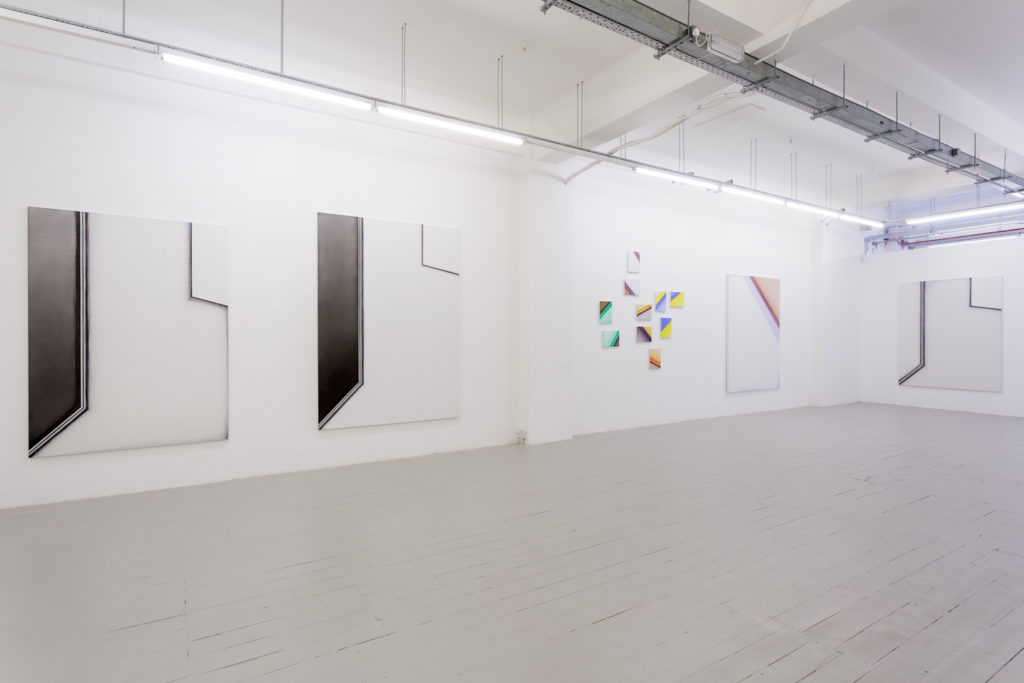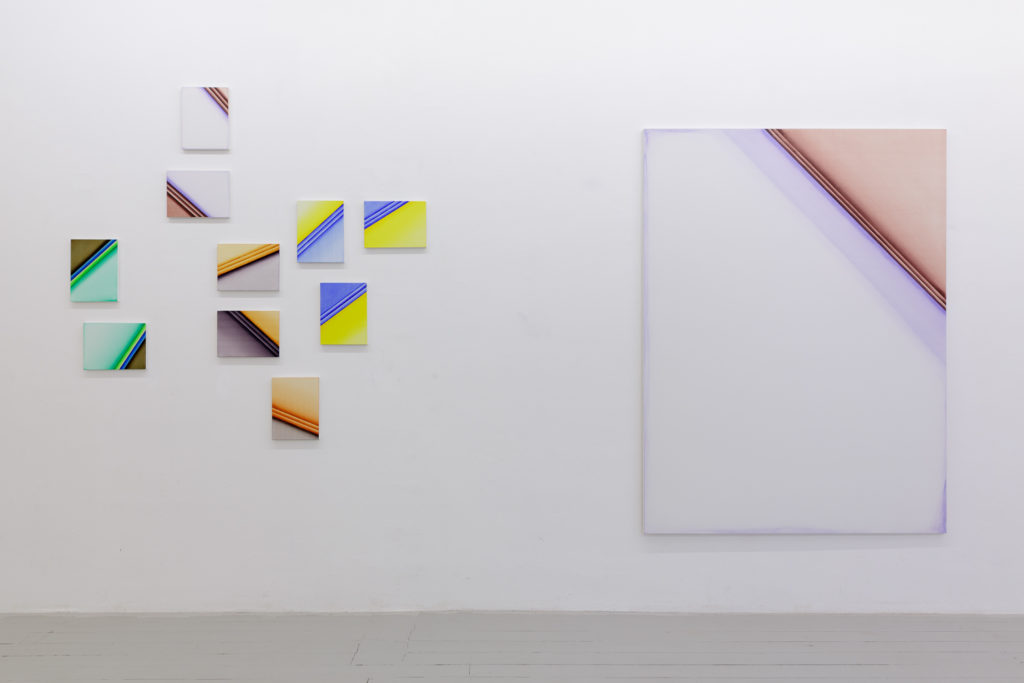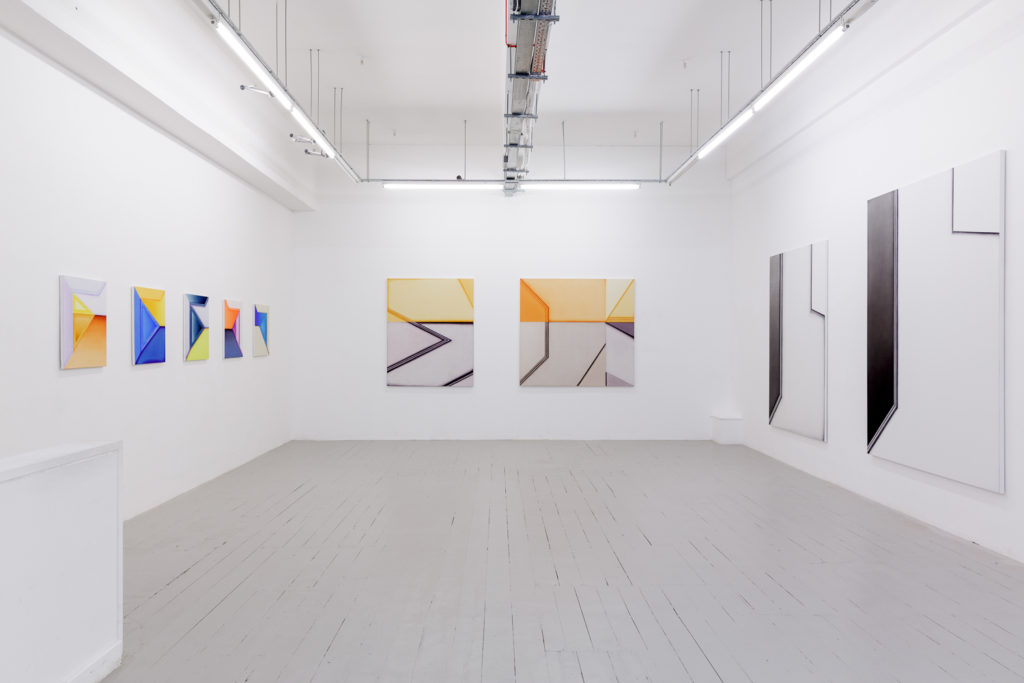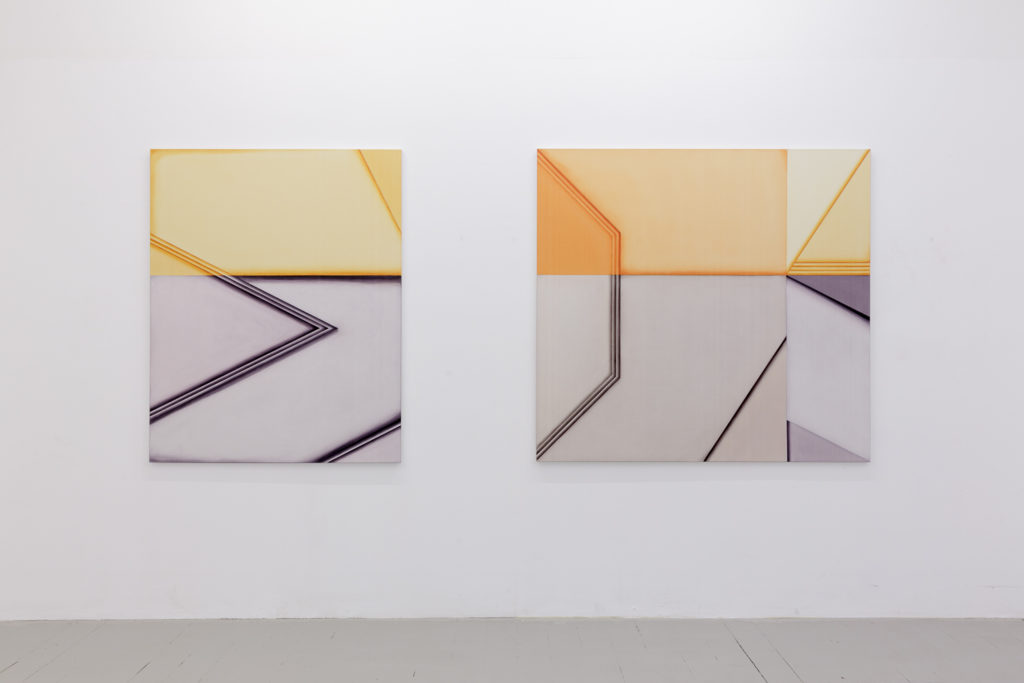Rising Star Selma Parlour Refreshes Abstract Painting With a Brainy Take on Space


Artnet Gallery Network

Selma Parlour is something of a rare breed: a young artist with one foot in the academic world and the other in the studio. Her carefully-studied paintings evoke and expand upon the formal techniques pioneered most famously by postwar American artists, while her studies engage with the theory and discourse behind the canonized work from that time.
Her first show at Pi Artworks in London, titled “Upright Animal,” features 23 subtly-complex canvases composed of sharp, overlapping shapes and bands of matte colors. Parlour paints with thin films of oil on linen, using the technique to play with depth and texture. The result is an illusory, tromp l’oeil-like effect that works against the eye’s instinctual efforts in finding points of focus. All paintings need to be seen in person to be properly appreciated, of course, but that’s especially the case with Parlour’s work, which purposely subverts the optics of a camera lens. What’s more, in person the paintings have a glowing quality, which, in conjunction with their angularity and shifting planes, suggests a relationship to the backlit screens of smartphones and tablets.

Installation view of “Upright Animal.” Courtesy of Pi Artworks.
“I think a lot about the history of abstract painting and institutional critique within the space of my own paintings,” Parlour tells artnet News. “With this work, I was really concerned with surface—how my surfaces don’t seem spatially tangible, and how they resist all the typical attributes we think of when we think of a painting. They’re very flat as if they’ve been printed or dyed, instead of painted. A consideration of the rectangle, the shape of the canvas, and the box-space of the gallery also feature prominently.”
The title, too, alludes to the spatial constraints of the gallery. “Upright Animal” is a reference to critic and theorist Brian O’Doherty, who used the phrase to describe the function of a gallery in his seminal essay, “Inside the White Cube”: “A gallery is a place with a wall, which is covered with a wall of pictures,” O’Doherty writes. “The wall itself has no intrinsic esthetic; it is simply a necessity for an upright animal.”

Installation view of “Upright Animal.” Courtesy of Pi Artworks.
With her rigorous dedication to formalist concerns, Parlour channels the Abstract Expressionists and Minimalists of ’50s and ’60s. She’s a big fan of that generation of artists, in particular Frank Stella, Robert Ryman, and Robert Mangold. Indeed, those painters provide helpful touchstones for her own work, which is deceptively simple and minimal, especially for the layman.
In addition to her painting practice, Parlour is also a scholar. She completed her Ph.D. in Art at Goldsmiths, University of London in 2014, and wrote a dense, 188-page thesis on the relationship between syntax and abstraction in contemporary art, citing the aforementioned painters, as well as artists like Jonathan Lasker, Donald Judd, and Wade Guyton, among many others.
“My interest is in syntax as a critical method,” says Parlour, noting that she wasn’t as drawn to the British Systems artists as she was the American painters. “It allows me to analyze painting and draw from its conventions in the making of new works.”

Installation view of “Upright Animal.” Courtesy of Pi Artworks.
“Selma’s brilliant in terms of talking about the relationship between painting and the academic approaches to it,” says Sacha Craddock, who curated the show. “That’s very unusual. I’ve always found that academics make really bad work because they talk too well about it. She’s an exception to that rule.”
Craddock, who also curated last year’s Turner Prize exhibition, met Parlour through the 2011 “New Contemporaries” show, an annual exhibition of the best work coming out of art schools, for which Craddock is both the chair and head of the selection process.
“I remember thinking how intelligent it seemed,” notes Craddock. “When I looked at her work it wasn’t that I was thinking about her relationship to the history of painting—that came later. I just saw a very interesting use of the shallowness of space that lent it an associative, illusory possibility, and a sustained relationship to abstraction that wasn’t absolutely about the rigors of abstraction.”

Installation view of “Upright Animal.” Courtesy of Pi Artworks.
“Upright Animal” is on view through February 10 at Pi Artworks in London.